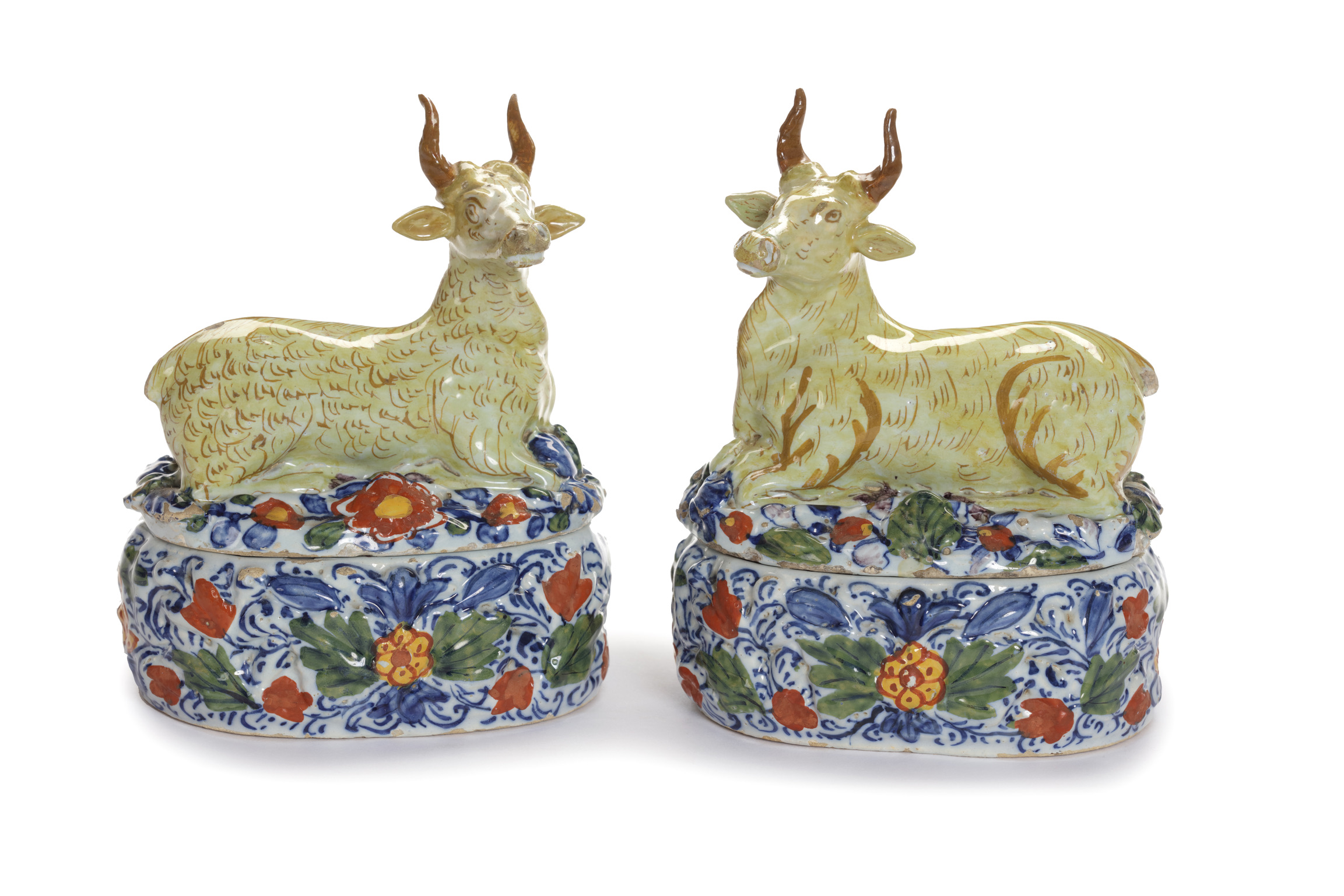![]()
Images on this website are licensed under a
Creative Commons Attribution-NoDerivs 3.0 Unported License.
OBJECT
D2348. Pair of Polychrome Oval Tureens and Recumbent Deer Covers
Delft, circa 1760
Marked PVM in blue on the tureens and in manganese on the covers for Petrus van Marum, the owner of De Romeyn (The Roman) factory from 1754 to 1764
Each cover surmounted by a stag with a light brown hide, brown eyes, nostrils, mouth, and antlers, and manganese hooves, modeled amidst plants with green and blue leaves and iron-red and yellow flowers, the oval tureen also molded with green leaves, blue sprigs, and iron-red and yellow flowers.
DIMENSIONS
Height: 15 cm. (5.9 in.); Width: 12.3 cm. (4.8 in.)|
PROVENANCE
Stodel Antiquites, Amsterdam, Antiekbeurs Delft, October 1975 (according to family archive);
Dutch Private Collection, Amsterdam and hence by family descent
PROVENANCE+
The complete provenance of this entry has been registered by notarial deed with independent and secure registration agency Provenance+ Amsterdam.
NOTE
Deer, among the most common inhabitants of wooded areas throughout Europe, Western and Central Asia and North America, were the most popular game during the heyday of hunting, known as the Age of Absolutism. Hunting, as an important element of the officium nobile, the courtly ceremonial, was the passion and privilege of the nobility. Beyond its original function of providing alimentation, it served as entertainment and indicated one’s status.
During the eighteenth century, tureens in the form of animals, figures, and groups of sportsmen were often displayed alongside whole table services, such as the costly zoomorphic designs. These elaborate wares were mostly used at special occasions at the beginning of the hunting season. Further, entire services decorated with hunting motifs were produced for grand dinners celebrating the hunt. At Meissen, Kändler modeled entire hunting parties in porcelain, which would have adorned the table of a themed dinner, probably after a successful day of hunting when a roast venison or roast wild boar was the feature of a banquet (see Ulrich Pietsch,“Porzellan und Jagd – Die Leidenschaften der sächsischen Kurfürsten,” in: Porzellan Parforce, 2005, pp. 11-21). In keeping with the hunting theme and in the absence of the beast itself, Delftware tureens in the form of game, such as stags or wild boars, made eye-catching centerpieces on a dining table.
SIMILAR EXAMPLES
A similar pair of polychrome butter tubs with recumbent stag covers is illustrated in Aronson 2020, p. 69, no. 34.









